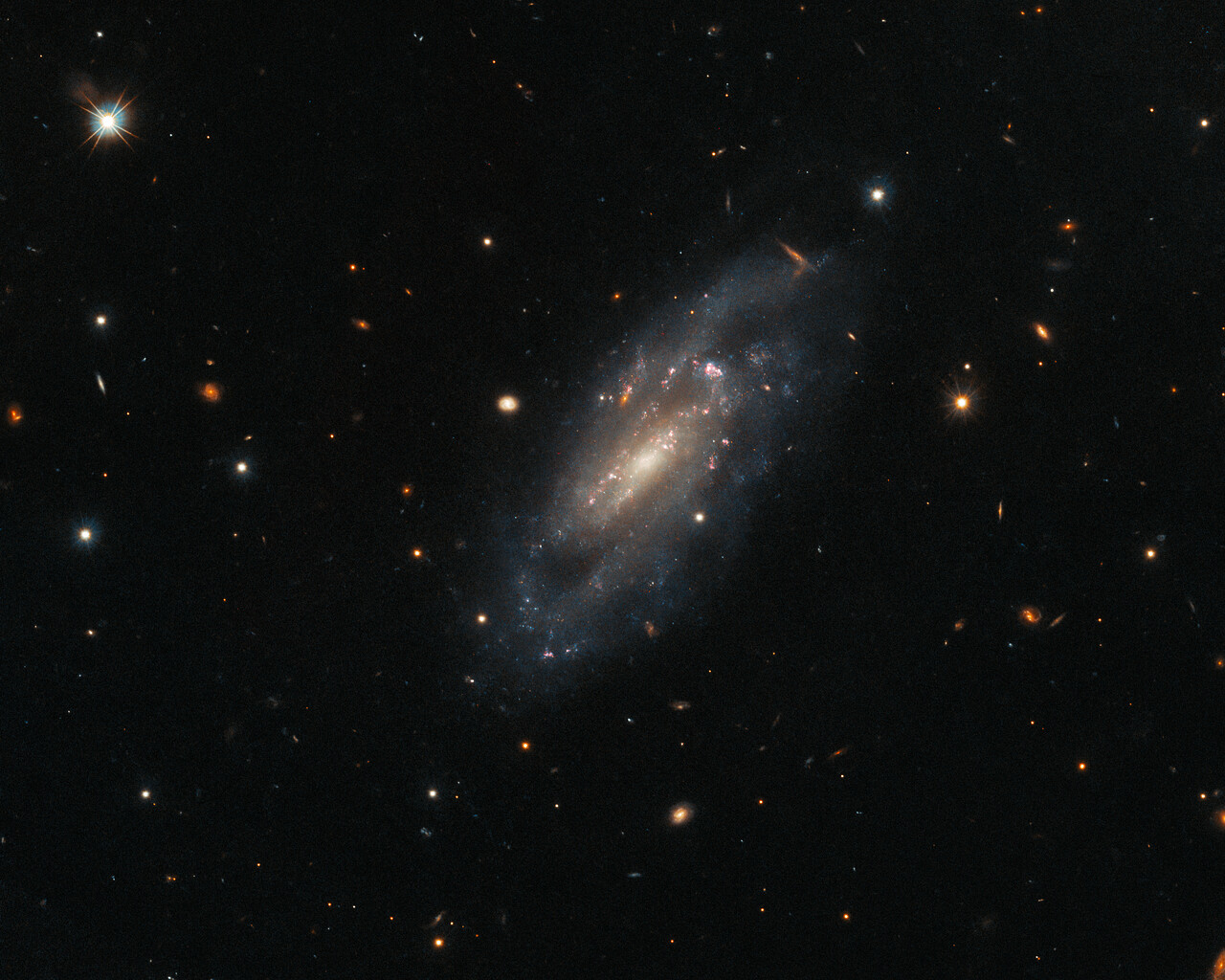This galaxy recently hosted an unimaginably energetic stellar explosion | See pic

The spiral galaxy featured in this latest image from the NASA/ESA Hubble Space Telescope recently witnessed an unimaginably energetic stellar explosion - a supernova explosion. Located approximately 184 million light-years away in the constellation Pegasus, UGC 11860 appears to be floating serenely against a field of background galaxies in this mesmerizing view.
For the unversed, a supernova explosion is a powerful and catastrophic event that takes place at the end of a massive star's life cycle. It is one of the most energetic phenomena in the universe, releasing an immense amount of energy in a relatively short period of time.
The supernova explosion in UGC 11860 was detected in 2014. Taking advantage of Hubble's Wide Field Camera 3, two separate teams of astronomers delved into the aftermath of this cataclysmic event, striving to unravel the secrets hidden within its remnants.
One of the two teams embarked on a quest to comprehend the nature of progenitor star systems that ultimately meet their fate in supernovae. According to the researchers, the unimaginably energetic environment during supernova explosions is predominantly responsible for forging the elements between silicon and nickel on the periodic table.
By closely examining UGC 11860, the team aimed to gain insights into the masses and compositions of these star systems, which will also help unravel the origins of numerous chemical elements present here on Earth.
Simultaneously, another team of astronomers used Hubble's powerful capabilities to track and investigate follow-up supernovae detected by robotic telescopes. These automated observers, tirelessly scanning the night sky without human intervention, capture a wide range of transient phenomena, from unexpected asteroids to rare and unpredictable supernovae.
These celestial objects can then be investigated in more detail by powerful telescopes such as Hubble.
Our ESA/Hubble Picture of the Week showcases the serene spiral galaxy UGC 11860, which played host to an energetic stellar explosion. 💥 Read more: https://t.co/TRk1gAXyB0 or 🧵👇 pic.twitter.com/dYubc6DUlY
— HUBBLE (@HUBBLE_space) July 3, 2023










